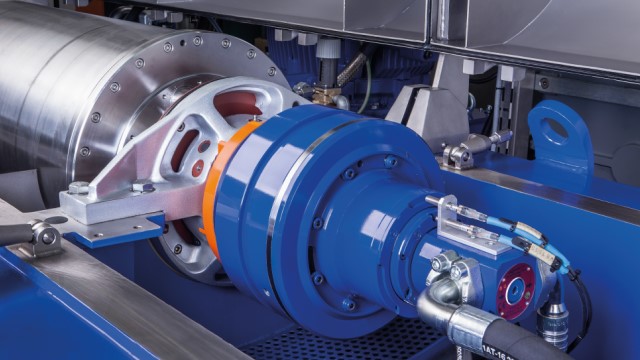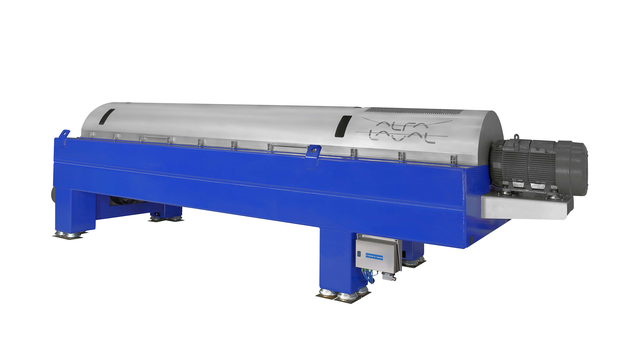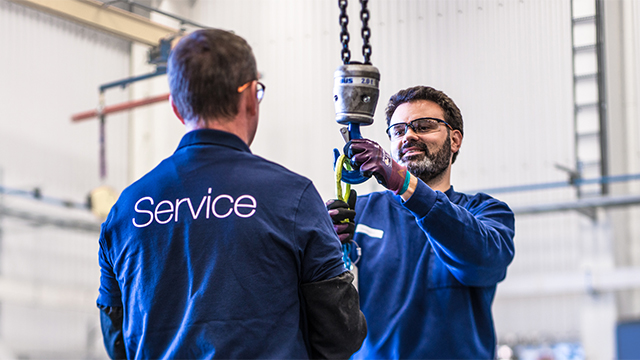LYNX
The Alfa Laval LYNX decanter centrifuge is a key component in solids-liquid separation for oil, gas and drilling industry processes such as barite recovery and treatment of oily water and slop oil. It is specially designed for heavy duty and high recovery at large feed flows and has the best available wear protection. It is also available as a three-phase version for separation of oil, water and dry solids.
Download the product brochure
Alfa Laval designed the LYNX decanter centrifuge with a focus on performance, easy access, reliability, low power consumption and low noise levels.

How it works
Alfa Laval LYNX drilling mud decanter centrifuge is built around a slender cylindrical bowl with a relatively large length/diameter ratio and a conical end. This bowl rotates at speeds of up to 3650 rpm (according to model), producing centrifugal force of anywhere from 300 to 3574 G. The other key components include a main drive motor, heavy-duty gearbox, back drive motor and control panel. The Alfa Laval direct drive gearbox ensures automatic control of the conveying speed.
The liquid drilling mud is fed into this long cylindrical bowl, where the centrifugal force presses it outwards to form a layer – known as the pond – around the wall. The thickness of this layer is determined by a series of discharge weirs at the end of the cylindrical section. The clarified liquid flows out over these weirs, with the aid of centrifugal force. Since the solids in the mud are heavier, they remain plastered against the bowl wall, and are continuously removed by the screw conveyor. They are then transported up to the conical section (known as the beach) where they exit via the discharge ports at the narrow end. Cleaned drilling mud exits at the opposite end.



